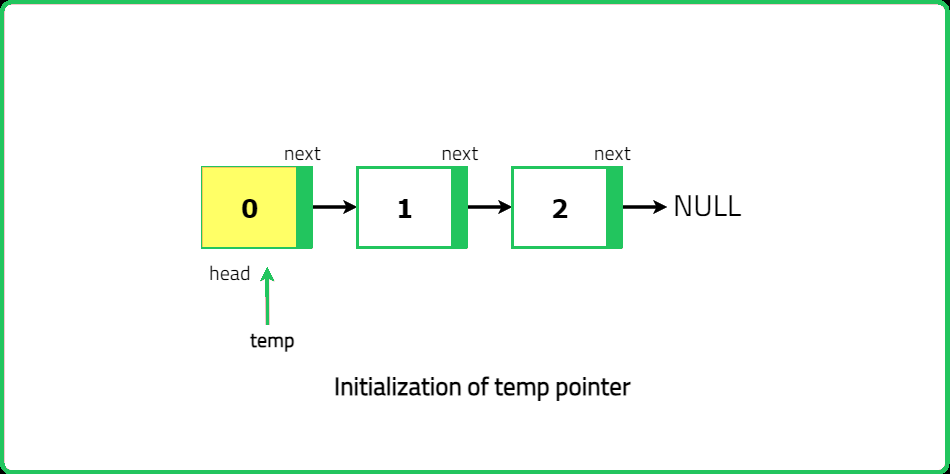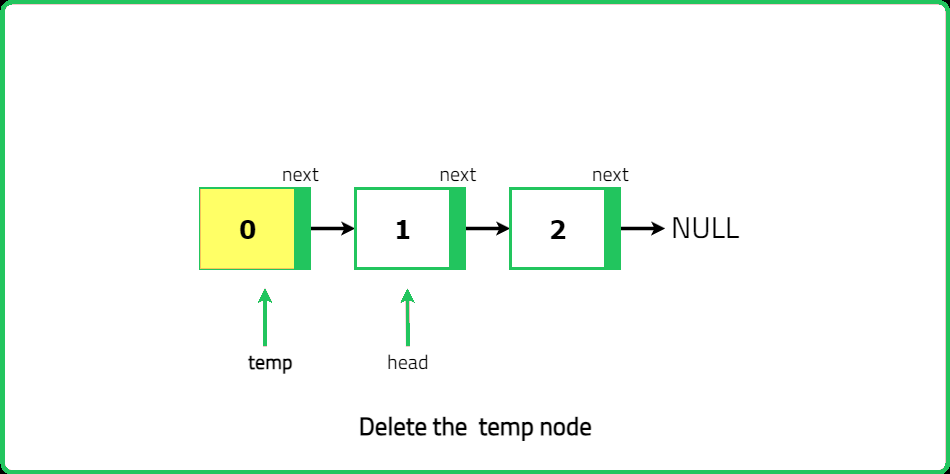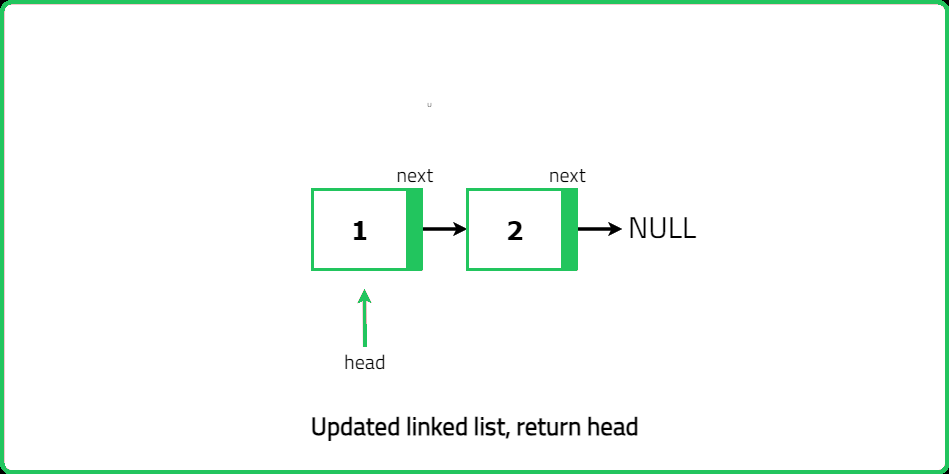Deletion of the head of LL
Linked-List
Fundamentals (Single LL)
Easy
Given the head of a singly linked list, delete the head of the linked list and return the head of the modified list.
The head is the first node of the linked list.
Please note that this section might seem a bit difficult without prior knowledge on what linkedlist is, we will soon try to add basics concepts for your ease! If you know the concepts already please go ahead to give a shot to the problem. Cheers!
Examples:
Input: head -> 1 -> 2 -> 3
Output: head -> 2 -> 3
Explanation: The first node was removed.
Input: head -> 1
Output: head
Explanation: Note that the head of the linked list gets changed.
Input: head -> 7 -> 8
Constraints
- 1 <= number of nodes in the Linked List <= 1000
- 0 <= ListNode.val <= 100
Hints
- Check if the list is empty (i.e., head is null or None). If true, return null or None, as there's no node to delete.
- If the list contains at least one node, move the head pointer to the next node.
Company Tags
Texas Instruments
Oracle
Roche
IBM
MongoDB
Riot Games
eBay
McKinsey & Company
Morgan Stanley
Pinterest
Byju's
Epic Systems
PwC
Shopify
Seagate Technology
Unity Technologies
Stripe
Target
Nutanix
Zoho
Walmart
Johnson & Johnson
Chewy
Flipkart
DoorDash
TCS
Cognizant
Accenture
Infosys
Capgemini
Wipro



